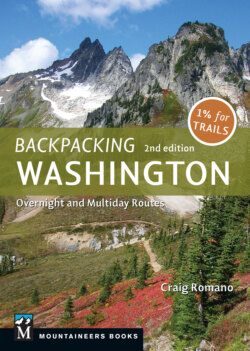Читать книгу Backpacking Washington - Craig Romano - Страница 26
GEAR
ОглавлениеWhile a full description of all available backpacking gear is beyond the scope of this book (which is about where to backpack, not how to backpack), it’s worth noting a few pointers. No backpacker should venture far up a trail without being properly equipped. Good footwear is essential. Every hiker will swear by different brands and types of boots, so your best bet is to be professionally fitted and try out a bunch—see what works for you. For clothing, skip cotton. When it gets wet, it stays wet and lacks any insulation value. In fact, wet cotton sucks away body heat, leaving you susceptible to hypothermia. Opt for synthetics and layering.
Make sure you have a good, well-fitting pack. And as far as what goes in it, you need to weigh (literally and figuratively) everything out, balancing utility, comfort, and convenience without overloading. There’s an old adage that goes something like this: Travel light, enjoy the hike. Travel heavy, enjoy the night. With today’s affordable lightweight equipment, there is no reason to schlepp 60 pounds of gear on a one- or two-night trip.
Fresh bear tracks at Cradle Lake (Trip 47)
As a general rule, you should not carry more than 25 percent of your body weight. If you’re 150 pounds, that means a pack weighing no more than 38 pounds. I usually carry around 35 pounds of gear (including water) on a one-to-three-night trip and am able to cover 15-plus miles a day without discomfort. Of course, there are plenty of backpackers who think I carry too much. These ultralight disciples travel with minimal gear, which may or may not be for you.
While the list of what you pack will vary, everyone should have a few important items in their packs for every trip: the Ten Essentials. I’ve also included my own backpacking master list, which I more or less adhere to on every trip, making minor adjustments for weather and trail conditions.
